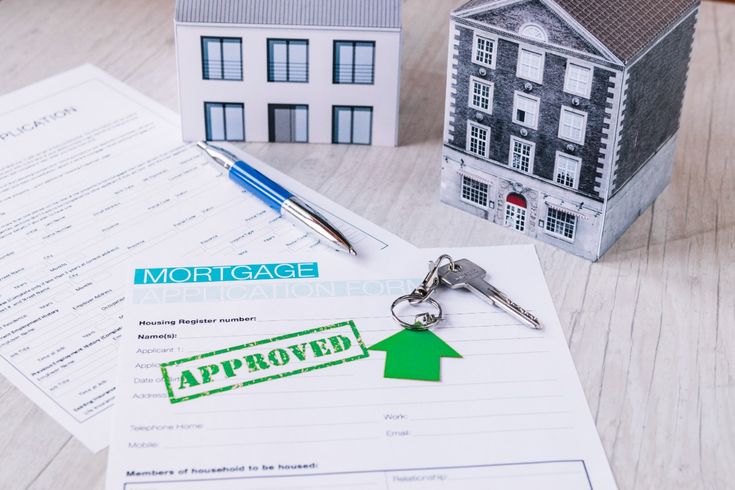
How Can You Navigate the Mortgage Approval Process Smoothly?
Buying a home is one of the most significant financial decisions many people will ever make. However, securing the right mortgage can be just as critical as finding the perfect home. The mortgage approval process can be complex, and many prospective homeowners need help feeling overwhelmed. Fortunately, with the right preparation and understanding, you can navigate this process smoothly and increase your chances of securing favorable loan terms.
This guide will walk you through the mortgage approval process and provide essential tips to make the journey smoother.
- Understand the Mortgage Approval Process
To effectively navigate the mortgage approval process, it is essential to understand the steps involved first. The process typically consists of several stages:
- Pre-Approval: This is often the first step when you begin looking for a home. During the pre-approval process, lenders evaluate your credit score, income, employment history, and debt-to-income ratio. The result is a pre-approval letter, which indicates the loan amount you are eligible for. Pre-approval helps you set a budget for your house hunt and proves to sellers that you’re a serious buyer.
- House Hunting: Armed with your pre-approval letter, you can now search for homes that fall within your price range. It’s crucial to have a clear idea of your needs and preferences during this stage to save time on properties that don’t meet your criteria.
- Mortgage Application: Once you’ve chosen a home, the next step is to submit a mortgage application. You’ll need to provide detailed information about your financial situation, including income, assets, debts, and the specific property you wish to purchase.
- Processing and Underwriting: During this stage, the lender verifies all of the information provided in your mortgage application. An underwriter will assess your creditworthiness and ensure that the property you’re purchasing meets the lender’s guidelines. The underwriter may request additional documentation to clarify any inconsistencies.
- Closing: If everything goes smoothly, the final step is closing. This involves signing all the necessary paperwork to finalize the loan and transfer the property into your name. You’ll also be required to pay any closing costs, which may include fees for appraisals, title searches, and insurance.
- Check and Improve Your Credit Score
Your credit score plays a pivotal role in determining the outcome of your mortgage approval process. A higher credit score not only helps you secure approval, but it can also lead to more favorable loan terms, such as a lower interest rate.
To improve your credit score:
- Check Your Credit Report: Before applying for a mortgage, it’s essential to review your credit report for any inaccuracies. Obtain free credit reports from the major credit bureaus (Equifax, Experian, and TransUnion) and ensure that all information is correct.
- Reduce Outstanding Debts: Paying down high-interest credit card balances can significantly lower your debt-to-income ratio, which will be a key factor in your mortgage application.
- Avoid Opening New Accounts: Refrain from applying for new credit cards or loans in the months leading up to your mortgage application. New credit inquiries can negatively impact your credit score.
- Save for a Substantial Down Payment
The size of your down payment can influence not only your chances of mortgage approval but also the interest rate you’ll receive. Generally, a larger down payment signals to lenders that you’re financially responsible and reduces the risk for them.
- 20% Down Payment: A down payment of at least 20% is considered ideal, as it can eliminate the need for private mortgage insurance (PMI). PMI is typically required if your down payment is less than 20% and adds cost to your monthly mortgage payment.
- Other Options: Some loan programs, such as FHA loans, may allow for a lower down payment, but they often come with higher interest rates or other fees.
Saving for a substantial down payment can take time, so it’s essential to plan and set a budget for this goal.
- Gather the Necessary Documentation
Lenders require various documentation to assess your financial stability. Being prepared with the necessary paperwork will speed up the mortgage approval process and reduce any delays.
- Proof of Income: Lenders will want to verify your income to ensure that you can afford the mortgage payments. This includes pay stubs, tax returns, and bank statements.
- Employment History: Lenders generally prefer borrowers with stable employment histories. Be prepared to provide details of your current and previous employers, including the length of your employment.
- Assets: You’ll need to provide information about any savings, investments, or other assets you may have. This demonstrates that you have the financial means to make a down payment and cover closing costs.
- Debts: Lenders will also evaluate your existing debts, such as credit card balances, car loans, or student loans. The goal is to determine your debt-to-income ratio (DTI), which is a critical factor in mortgage approval.
- Avoid Major Financial Changes
Maintaining financial stability is essential during the mortgage application process. Any major changes to your financial situation can raise red flags for lenders and may delay or even derail the approval process.
- Maintain Employment: Avoid changing jobs or leaving your current employer during the mortgage application process. Job stability is an important factor in the lender’s decision-making process.
- Avoid Large Purchases: Refrain from making large purchases, such as buying a new car or applying for new credit, as these can affect your debt-to-income ratio and reduce your borrowing capacity.
- Shop Around for the Best Mortgage Rates

Not all lenders offer the same mortgage rates and terms. To secure the best deal, it’s essential to shop around and compare offers from different lenders. Here are some tips to help you find the best mortgage rate:
- Compare Multiple Lenders: Obtain quotes from several lenders to compare interest rates, fees, and loan terms. Even a small difference in interest rates can significantly impact your monthly payment and the total cost of the loan over time.
- Consider Different Loan Types: Different loan types, such as fixed-rate mortgages and adjustable-rate mortgages (ARMs), offer different benefits depending on your financial situation. Fixed-rate mortgages provide stability with consistent payments, while ARMs may offer lower initial rates that could increase over time.
- Get Pre-Approved Before House Hunting
Getting pre-approved for a mortgage before you start house hunting offers several advantages:
- Know Your Budget: A pre-approval letter tells you how much you can borrow, helping you narrow down your home search to properties within your budget.
- Strengthen Your Offer: Sellers are more likely to accept offers from pre-approved buyers because it signals that you are a serious and financially stable buyer.
- Understand the Closing Process
Once you’ve been approved for the mortgage, the closing process begins. This involves signing the final paperwork, paying closing costs, and transferring ownership of the property.
- Review the Closing Disclosure: Before the closing date, your lender will provide you with a closing disclosure. This document outlines all of your loan terms, including the interest rate, monthly payment, and closing costs. Carefully review this document to ensure there are no discrepancies.
- Finalizing the Loan Agreement: At closing, you’ll sign the final loan agreement and any other necessary paperwork. You’ll also pay your closing costs, which typically include fees for appraisals, inspections, and legal services.
- Seek Professional Guidance
Navigating the mortgage approval process can be overwhelming, so it’s often helpful to seek professional guidance. Consider working with a mortgage broker, a real estate agent, or a financial advisor who can provide valuable insights and help you find the best mortgage for your needs.
- Stay Informed and Prepared
The mortgage approval process can be lengthy and sometimes complicated, but staying informed and prepared will help reduce stress and ensure a smoother journey. Keep in regular contact with your lender, respond promptly to requests for additional documentation, and stay patient.
Conclusion
Navigating the mortgage approval process can be a manageable task. By understanding the steps involved, improving your credit, saving for a down payment, and seeking professional advice, you can enhance your chances of securing a favorable mortgage. With careful preparation and a clear strategy, you’ll be on your way to becoming a homeowner in no time.


